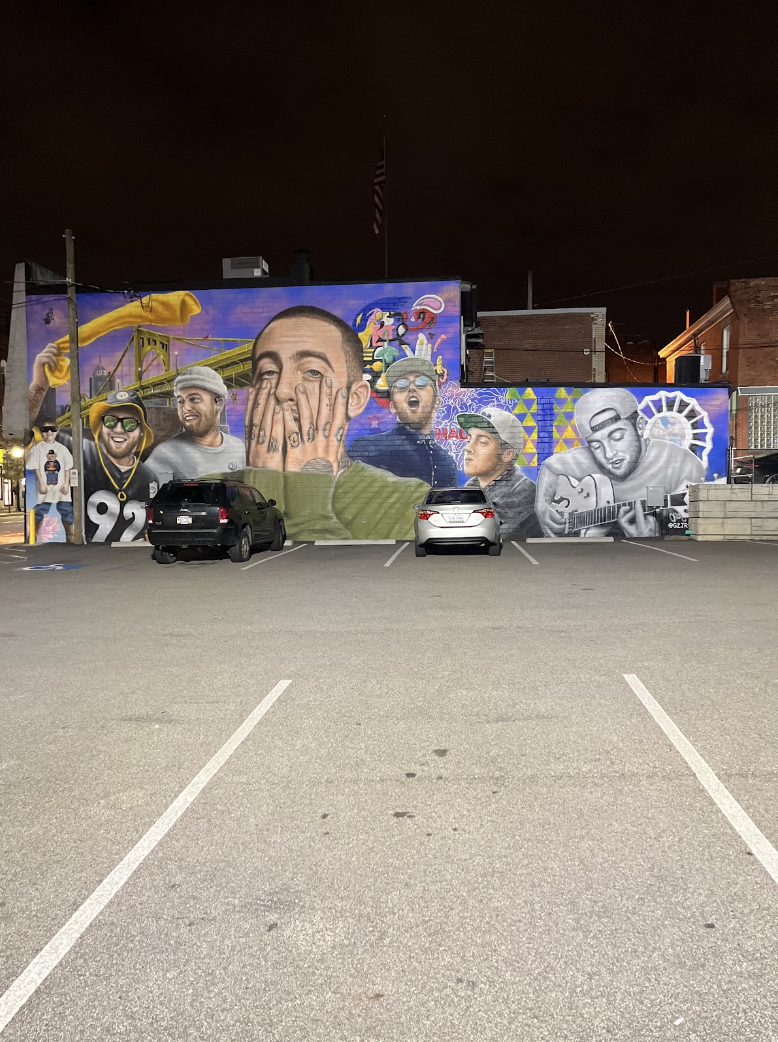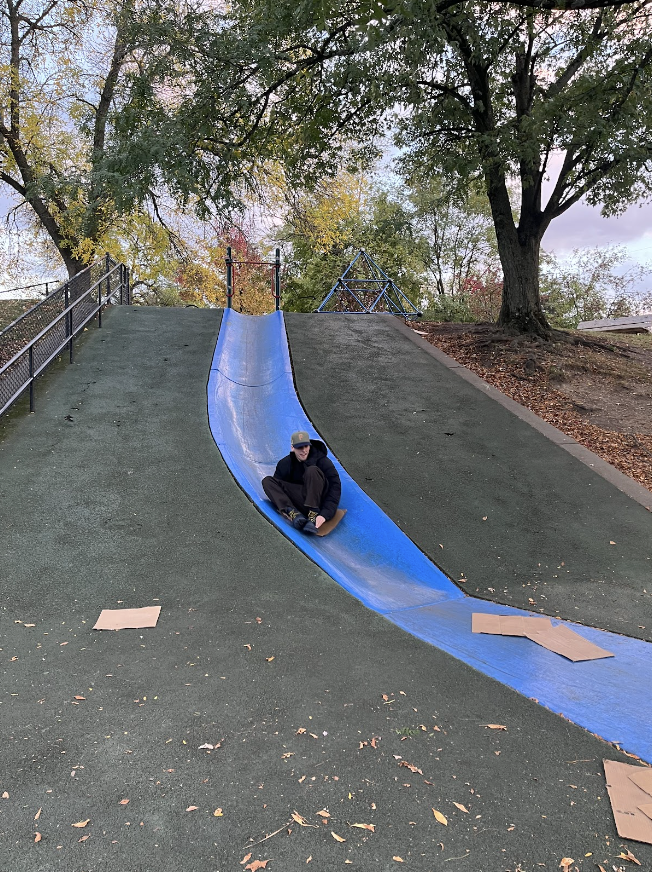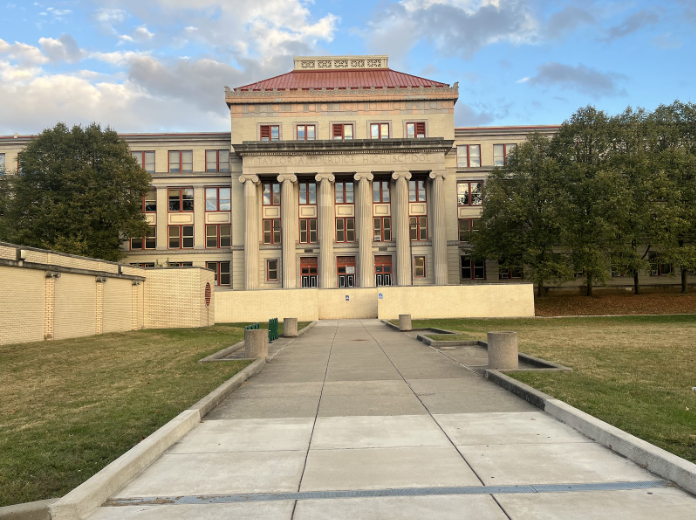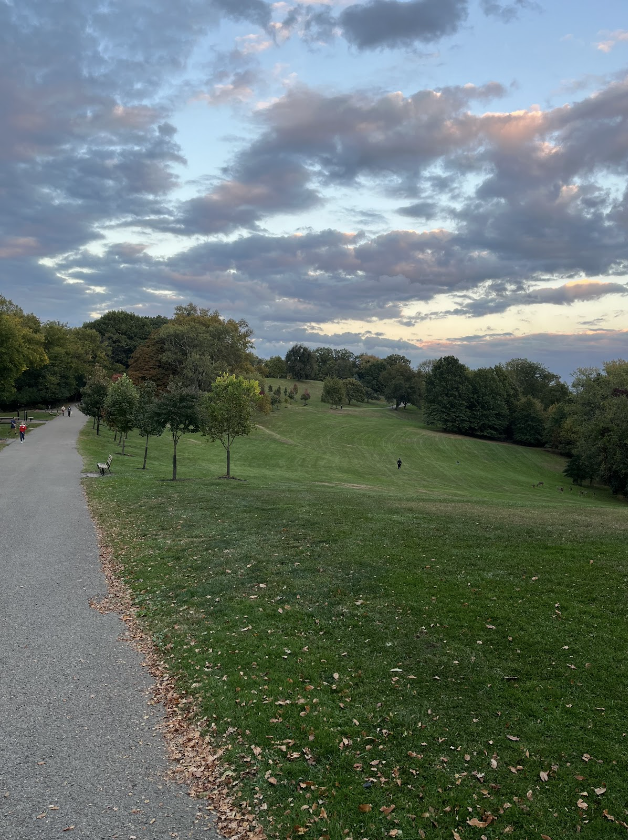Mac Miller: Pittsburgh's Golden Child
Graphic by Jonah Weintraub
By: John Maley
Pittsburgh: a city built by the steel industry but made alive by the people. Yinzers proudly take pride in what is theirs. From the rivers to the Steelers, from Primantis to the Pirates, a melting pot of different backgrounds come together in community to celebrate what makes their city great. One of these proud yinzers was Malcolm McCormick – better known as Mac Miller.
Malcolm grew up an ordinary kid playing sports and kicking it with his friends, but he could rap. It consumed him, and as early as 15 years old, that's all he wanted to do. He released his first mixtape, But My Mackin Aint Easy, in 2007 under the name Easy Mac. Over the next couple of years, he would battle rap downtown and keep building up his musical resume, dropping The Jukebox: Prelude to Class Clown and The High Life.
Around this time, he adopted the name Mac Miller. Local support was building, and his tapes were buzzing around the city. While recording with fellow Pittsburgh native Wiz Khalifa in 2010, Mac met the president of Rostrum Records, who subsequently signed him. Later that year, alongside Rostrum, he dropped the legendary mixtape K.I.D.S. Mac’s youthful, cocky demeanor with this tape took the city by storm. He was unapologetic about chasing parties, women, and money as a regular kid – and teens related. But what really stands out in the tape is Mac’s connection to the Steel City: an area with less of a rap scene than other major cities.
His debut studio album, Blue Slide Park, would take this love of Pittsburgh a step further. The album was named after a playground located on the edge of Frick Park, with an inground blue slide people go down while riding pieces of cardboard. It was not formally named Blue Slide Park until after he died, which should tell you how respected Mac was. About a quarter of the songs on the album were named after real places in Pittsburgh. English Lane is a street right next to Blue Slide Park, Frick Park Market is a market/deli located in Squirrel Hill, and 5th Avenue is a street that goes through much of the city. With so many references to Pittsburgh, it felt like Mac wanted to break into the mainstream on the back of his love for his city, which is exactly what happened when the album debuted at #1 on the Billboard 200 chart in 2011. Pittsburgh was suddenly on the map, and the city had a new source of pride: Mac Miller was its golden child.
After Blue Slide Park, Mac’s music developed much further than catchy frat-raps about his teen years in Point Breeze, but it didn't matter: the imprint was permanent, and the influence he had on kids growing up in Pittsburgh was immeasurable. The only way I could describe the feeling is to compare it to the Steelers. That’s how important Mac is to the city. Just how the Steelers are the joy of the city for winning 6 Super Bowls, Mac Miller is a Pittsburgh icon for becoming one of the biggest hip-hop artists in the world while wearing his city on his sleeve. Pittsburgh will forever be proud of him for that. Like the Steelers, Mac became way bigger than his local fanbase but forever remained authentic and true to his roots. He is a testament to the pride that Pittsburghers have for their city.
Thank you for everything you did for Pittsburgh.






